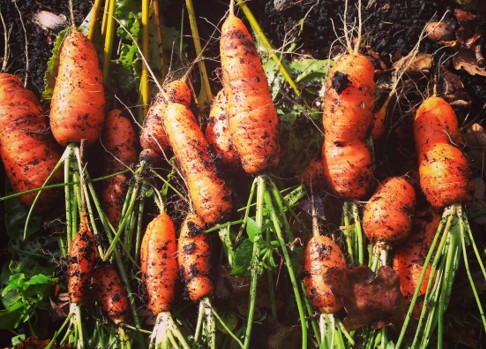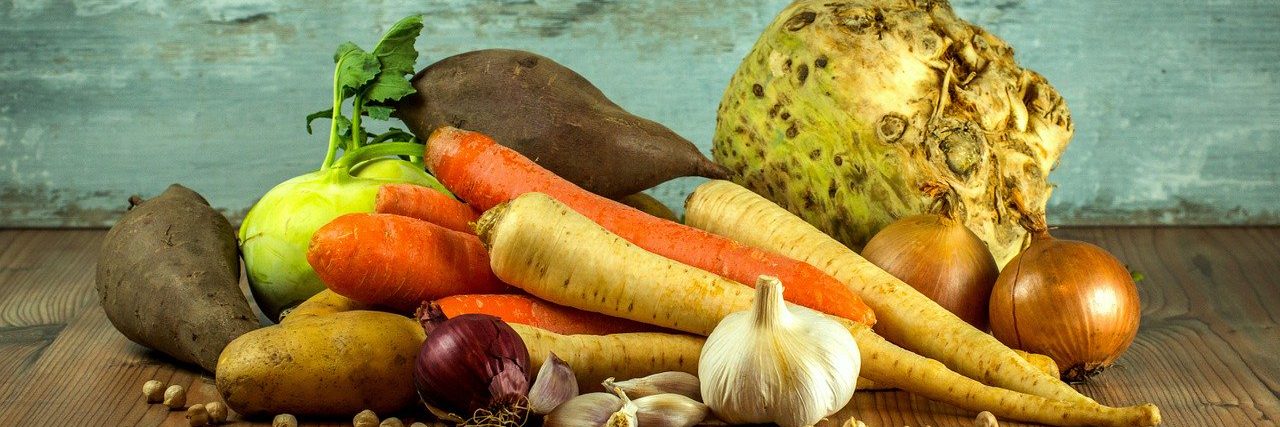Over a quarter of us will be thinking about sustainability when preparing our holiday feast this year, according to a new poll of 3,000 UK adults [1]. Thankfully, the internet is already brimming with helpful tips on how to make our feasting more sustainable, ranging from ways to repurpose and store our festive leftovers, to eco-friendlier purchases like wonky vegetables. But what if I told you that the 4.2million meals-worth of festive food we waste each year [2] is probably a gross underestimation?

When we think about food waste, we tend to think about the food that’s already been cooked or that we consider suitable for cooking – the main event of the meal, if you like. Rarely do we consider the cut-offs, peelings and stalks of our roasted vegetables to be food waste, because we’re unaware that they’re edible. This perception has been reinforced by decades of cooking shows and recipe books instructing us to remove food defects and discard the slightly tougher parts of the plants, as well as the systematic removal of other edible plant parts before our vegetables have even reached the supermarket shelves.
As the Kitchen Gardener for Kew Royal Botanical Gardens, I’m acutely aware of how much of the edible plant is currently missing from our festive roasts. Omitting these castaways from our dinner not only makes our feasting less tasty, but less sustainable too. So in light of the modern pressures on our food system, I’m keen to bring the old practice of eating ‘root-to-stalk’ back to the festive dinner table.
Top tips for root-to-stalk feasting:
Regardless of your dietary requirements, roasted winter vegetables are at the heart of a festive meal, and eating root-to-stalk allows us to continue enjoying those vegetables long after the meal has ended. Here are my top tips for vegetable cut-offs:
- Carrot tops are incredibly delicious! They can be made into a pesto or quickly chopped up and added to a salad.
- The peelings of root vegetable such as potatoes, parsnips, carrots and swedes can be baked and turned into festive crisps to go along side boxing day sandwiches.
- The leaves of root brassicas such as swedes and turnips have a delicious mustard flavour which can be stir-fried with left-over turkey, whilst the stalks of cabbage might be thinly cut and turned into a slaw or pickled to eat another day.
- If you are lucky enough to have fresh pea pods for your feast, take the inedible pods (sadly they are too full of lignin to digest) and make your own pea pod wine which will be ready to celebrate the beginning of spring.
- And if the last thing you want to do during your festive break is more cooking – no problem. Simply put all the peelings, stems and onion skins into a big pot to create a vegetable stock that will make a fantastic base for soups and stews.
The Head Chef at the restaurant in Kew Gardens also has a few tricks up his sleeve. Not only does he use vegetable scraps to make soups and stocks, he also uses them to make vegetable brownies. More recently he has fermented the peelings and trimmings to make the cut-offs go even further, proving that this is a manageable solution on a professional scale, as well as a delicious one.
Now onto fruit cut-offs. Left-overs from fruit make delicious desserts and sauces! Orange peels can be candied, zested, added to liqueurs or made into tea. Apple cores can be used to make apple puree or even dishes such as agrodolce, an Italian sweet and sour sauce. And if you’re not in the mood for additional cooking, most fruit leftovers can be frozen and turned into preserves at a later date.

I also have plenty of tips if you’re the lucky owner of a vegetable plot. In most vegetable plots the harvest ends with the target crop, missing delicious secondary harvests. A prime example of this is garlic, which is mainly harvested for the delicious bulb. However, all parts of garlic are edible; the flower stalk (known as a scape) is a delicacy, the flowers can be added to a salad, and the leaves can be used as you would spring onions. What’s more, with cabbages, cauliflower and calabrese, leaving the stem in the ground after harvesting the main crop will produce a flush of edible greens.
If you have grown celeriac for the winter season, remember that it is directly related to celery, meaning although slightly tougher and a little more bitter, the celeriac greens are a welcome ingredient in winter dishes. Florence fennel is usually still growing in early winter, and this delicious crop has an edible root along with its bulb and leaves. The leaves at the top of the Brussels sprout plant are also deliciously mustard-flavoured and will withstand cold weather, so these can be harvested throughout the winter.
Finally, there’s a lot of extra nutrition to be had out of the vegetable garden, so anything that doesn’t make it to the plate should go back to the compost heap so it can be broken down and used to fertilise next year’s harvest.
A strategy for the whole food system
Needless to say, the festive season isn’t the only time we should be eating root-to-stalk. Adopting this approach year-round has the potential to systemically address a number of environmental challenges facing the food system.
Firstly, reducing the quantity of food that we need to produce each year reduces the water-, land- and carbon footprint of our food, and turning unused parts of the plant into compost would also reduce our reliance on inorganic fertilisers that release greenhouse gases (GHGs). This is important for tackling the climate crisis, as 19% of national GHGs are produced by our food system [3].
Lowering the land-footprint of our food system is also key if we’re serious about reforesting 25% of Britain by 2050 [4] and recovering our national biodiversity. Getting more food out of the plant could reduce the need for intensive agriculture, allowing the wider adoption of organic methods and supporting native pollinators.
Finally, the root-to-stalk approach also encourages us to cook more food at home, reducing plastic packaging and helping marine wildlife. With the climate emergency, extreme weather and Blue Planet II quoted to be the three top drivers of Brits wanting to change their feasting behaviour this year [1], eating root-to-stalk offers a systemic, feel-good strategy to be more sustainable this festive season.
About the author
Hélèna Dove is the Kitchen Gardener at the Royal Botanic Gardens, Kew. She grows using organic principles and cultivates a range of vegetables from heritage varieties to more uncommon crops from around the world.
References
- https://www.circularonline.co.uk/news/more-than-a-quarter-of-us-plan-to-cut-christmas-food-waste-this-year/
- https://www.independent.co.uk/life-style/christmas/food-drink/over-4-million-christmas-dinners-are-thrown-away-each-year-a6757211.html
- Garnett, T. 2008. Cooking up a Storm: Food, greenhouse gas emissions and our changing climate. The Food and Climate Research Network, Centre for Environmental Strategy, University of Surrey.
- https://www.theguardian.com/environment/2019/may/21/rewild-quarter-uk-fight-climate-crisis-campaigners-urge




Hi,
Keep up the good work,
Really informative and delicious :) article with great tips. Keep on publishing this type of content
Hello, I have read that garden pea pods are edible if boiled and then blended. Is that true? Thanks